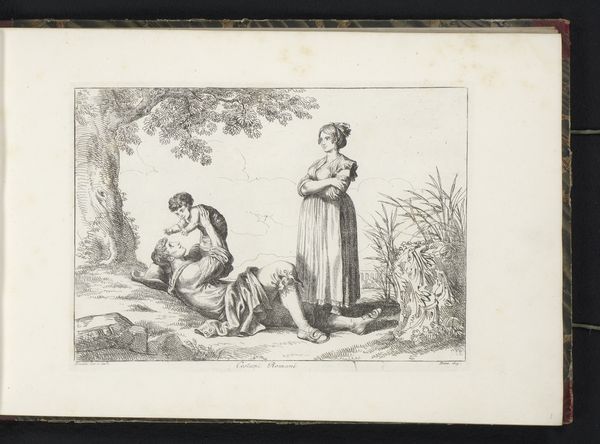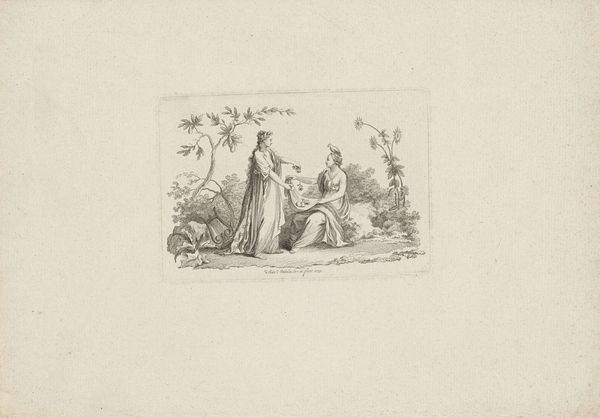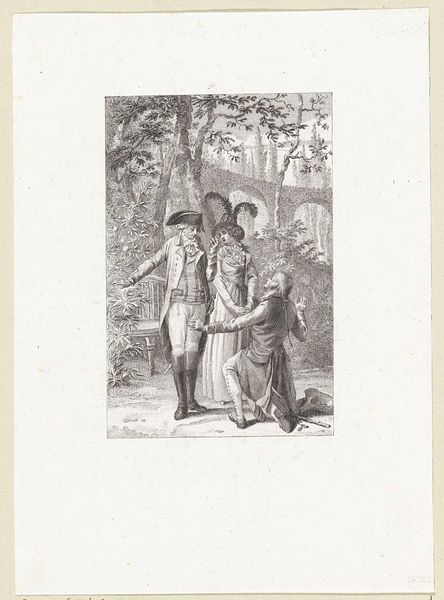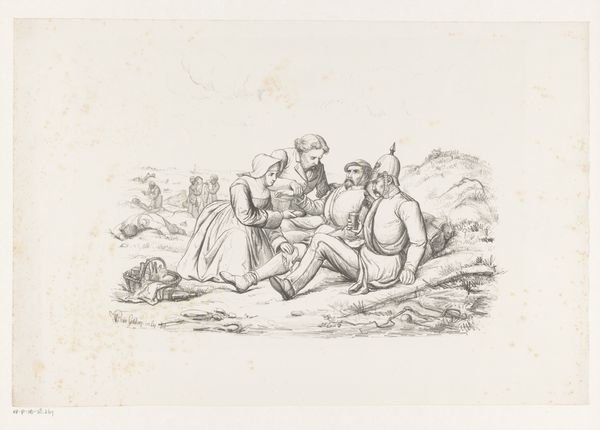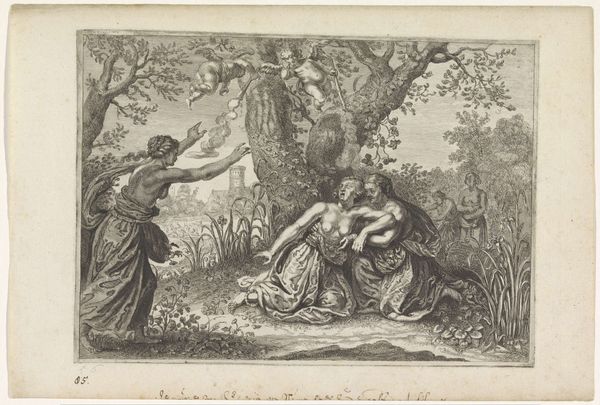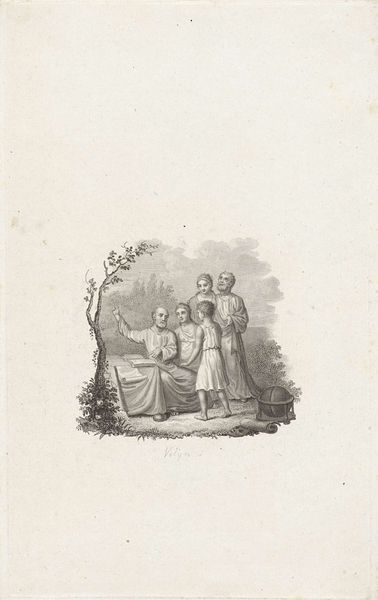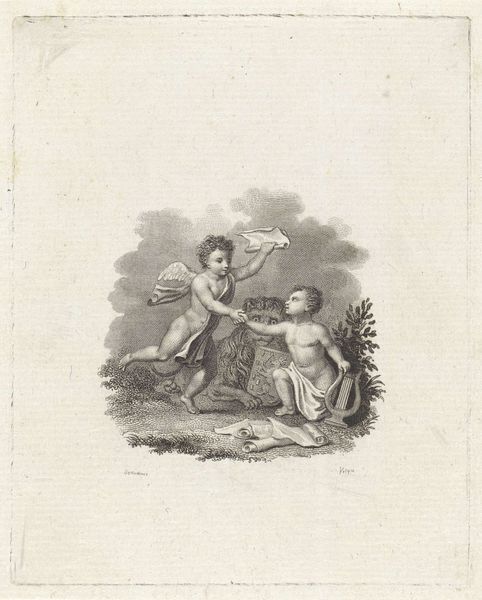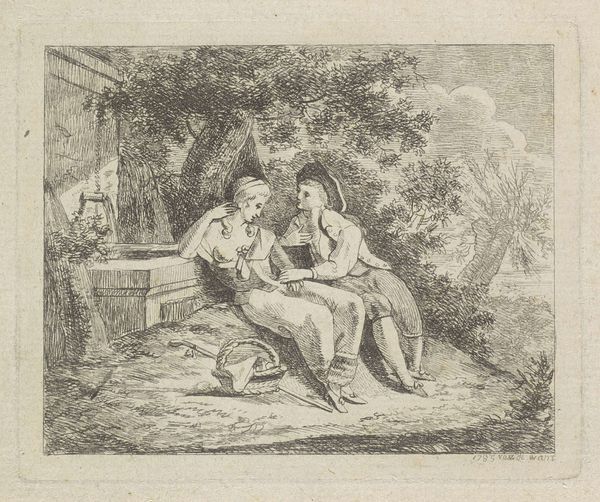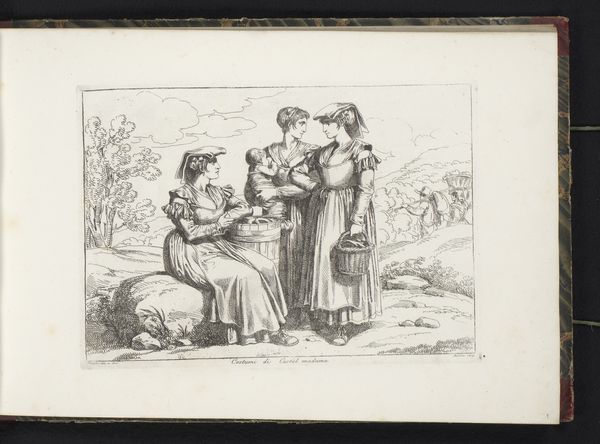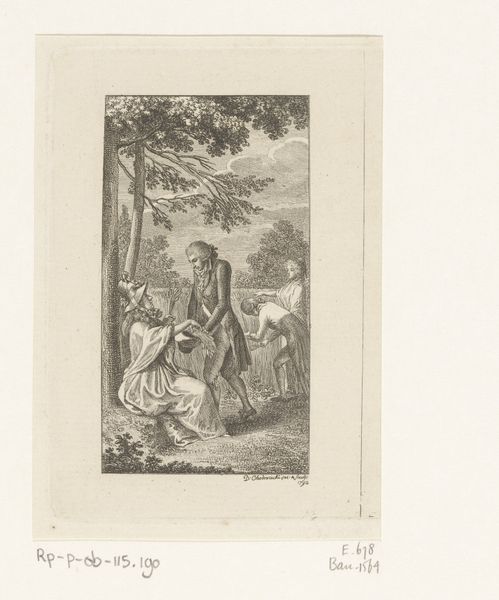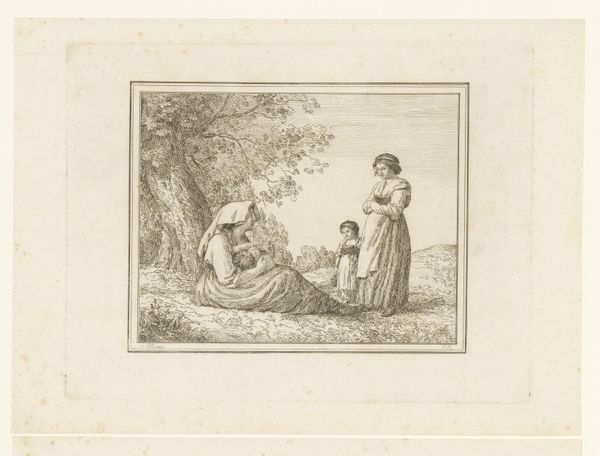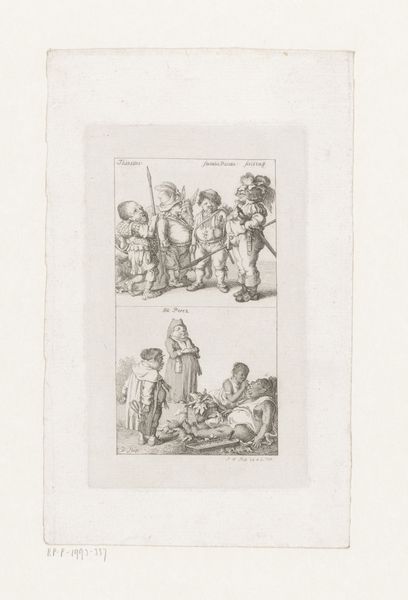
print, engraving
#
allegory
# print
#
landscape
#
figuration
#
romanticism
#
engraving
Dimensions: width 99 mm, height 66 mm
Copyright: Rijks Museum: Open Domain
This is an etching by Pieter de Goeje called 'Vrouw en twee putti', or 'Woman and two putti', made in the Netherlands, sometime in the late 18th or early 19th century. The image depicts a woman seated beneath a tree, making a garland of flowers, assisted by two putti, or cherubs. This image is steeped in the visual language of classical antiquity, revived during the Renaissance and still influential at this time. We can see this in the woman’s classical drapery and hairstyle and the putti who recall the god Cupid. In this period, the Netherlands was under French influence and Neoclassicism was a popular style, referencing a desire for a return to the perceived order and harmony of the ancient world. Prints like this one were popular among the middle classes, and circulated widely at a time when art was becoming more accessible to a wider public through museums and public exhibitions. To understand the role of art in society, we must look at historical resources like exhibition catalogues, press reviews, and artists' biographies.
Comments
No comments
Be the first to comment and join the conversation on the ultimate creative platform.
